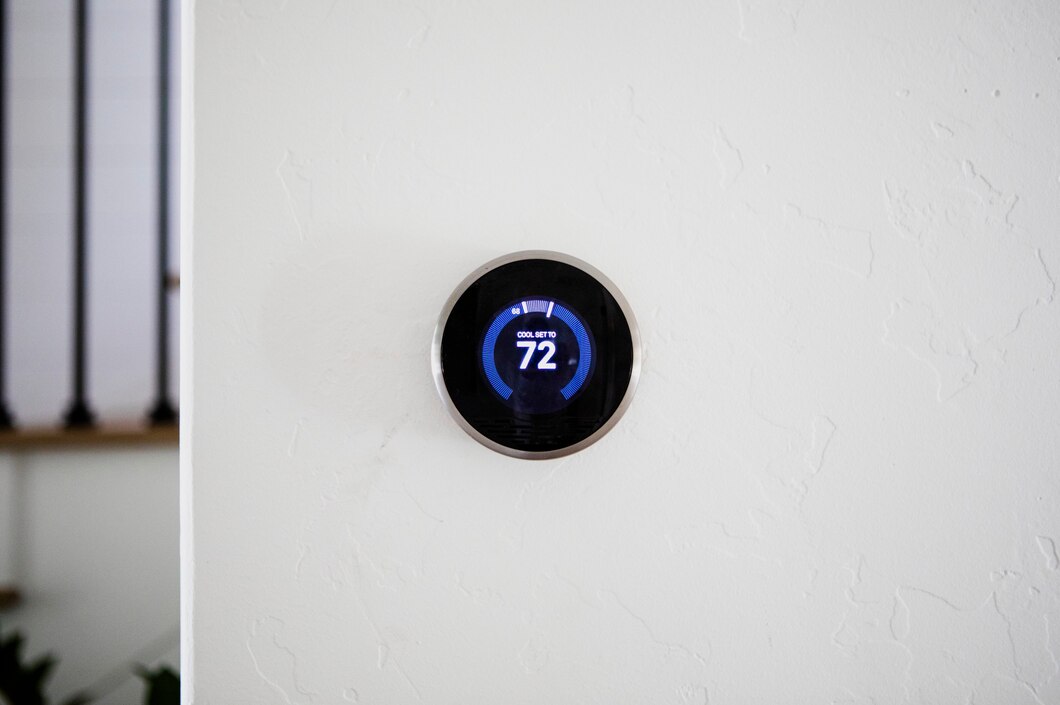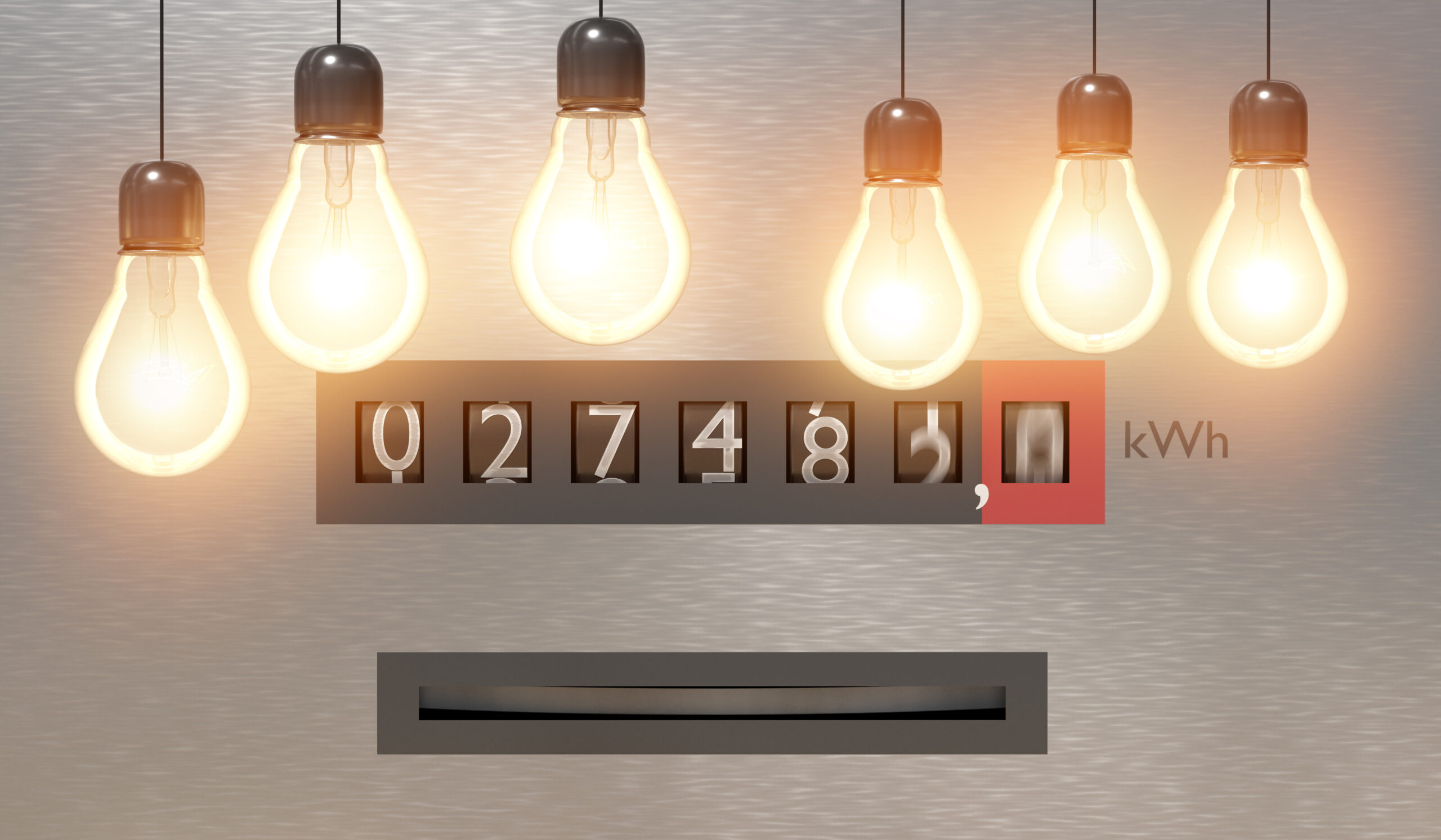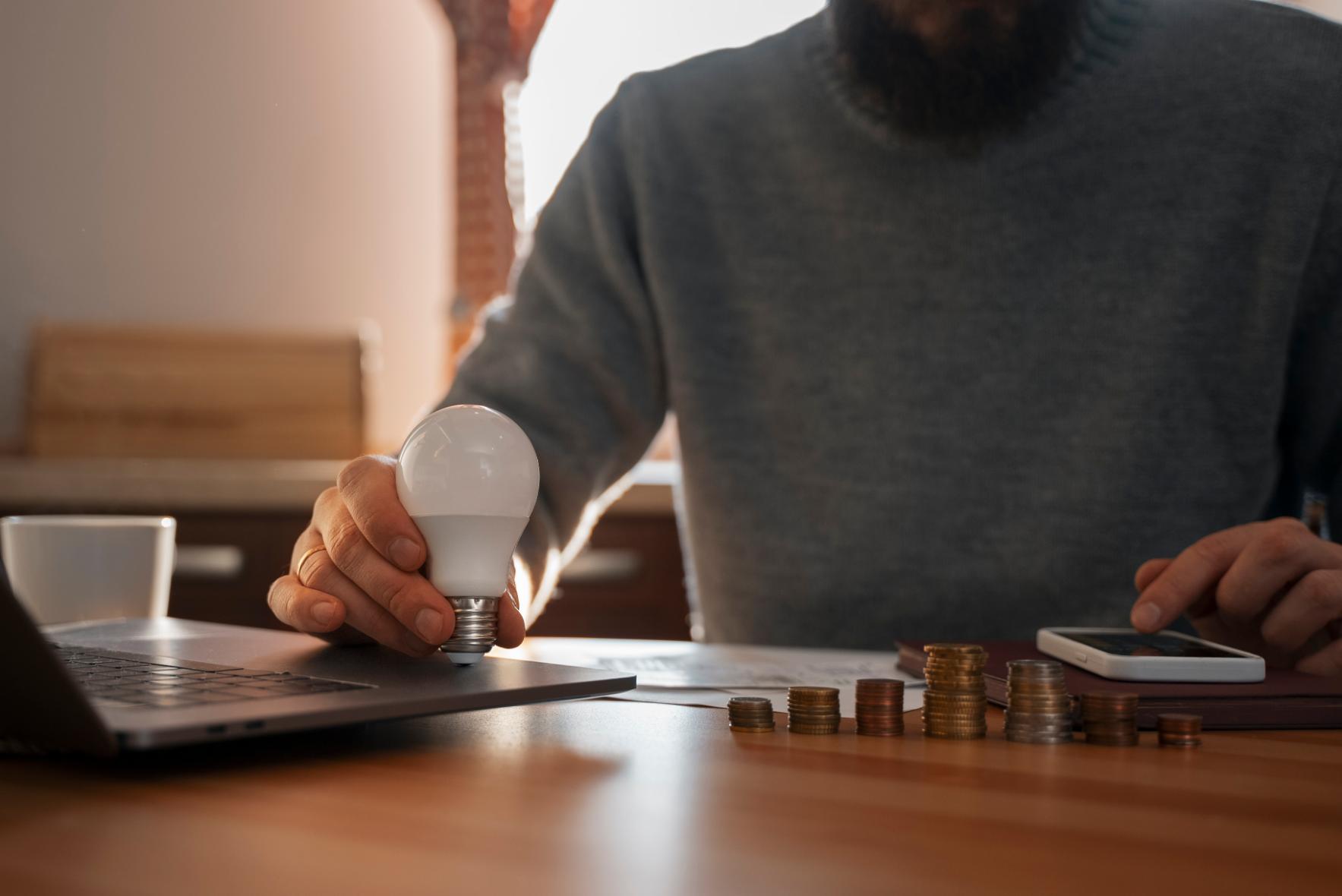Smart meter, advanced meter, Type 4 meter, digital meter… this handy piece of tech is known by many names, but what does it actually do? They are often touted as ‘new’ technology, and the way of the future to connect electricity and gas, but did you know smart meters are actually used extensively around the world and have been used by some Australian businesses for more than 20 years?
On this page we’ll answer some of the most common questions we hear about smart meters.
- Do I need a smart meter?
- What is it?
- How does it work?
- What does a smart meter look like?
- How to read a digital electricity meter Australia?
- What are the advantages?
- What are the disadvantages?
- How is electricity measured?
- What is the best electricity plan for a smart meter?
If you are moving home electricity or gas, keep reading to find out more about smart meters, or skip to the section you are interested in.
Do I need a smart meter?
In 2012, the Australian Energy Market Commission (AEMC) conducted a review of the energy market called the Power of Choice (POC). A number of rule changes came out of the review, which were implemented by the Australian Energy Market Operator (AEMO) by December 2017. You can read more about it here.
One of the new rule changes is the Competition in Metering rule. Since 2017, homes and businesses in most areas connected to the National Electricity Market (NEM) can no longer purchase traditional meters.

Image by rawpixel.com on Freepik
Although all new meters must be a smart meter, in most states there is no requirement to upgrade your meter unless your current one breaks or becomes faulty.
In Victoria, a mandatory rollout of over 2 million smart meters has been completed, bringing the advantages of the technology to consumers, retailers and distributors, including giving residents the chance to connect to cheap electricity in Victoria.
Regardless of your state’s rules, you will need a smart meter if you want to take advantage of certain products, such as off-peak rates, energy tracking apps or solar feed-in tariffs. You can put in a request to your retailer to have your meter upgraded at any time, more on that below.
What is a smart meter?
A smart meter simply replaces your current meter. It is a similar size and shape and will be installed in the same location. The face of a smart meter has a digital panel to take a reading, rather than an analogue dial or clock face, making it easier to read and more accurate.
Although they do have a reading displayed on them, you will also have an app and/or in-home device to see your energy consumption. Thai data is also available to your retailer, so you will no longer need a technician to visit your home to take a reading.
Electricity retailers are responsible for the installation, reading, operating and maintenance of all meters, whereas in the past it has been the distributor. This is an improvement for customers, as you now have a one-stop shop for all your energy needs.
How does a smart meter work?
Smart meters work differently from analogue meters in two ways. Firstly, they track electricity usage in more detail and secondly, they send information to the consumer, distributors and retailers remotely, rather than needing to take a manual reading.
Smart meters record a reading every 5 or 30 minutes, compared to old-fashioned meters which only show your usage from one billing period to the next. This means you can track your usage at different times of the day to identify how you can save energy and take advantage of Time of Use (ToU) tariffs.
This also gives the distribution network more useful insights into peak demand times to help them manage the network more efficiently.
Smart meters are read remotely through an app on your phone. Energy companies can also receive this remote data, giving them a constant stream of data rather than relying on technicians to visit individual homes to perform a reading.
Several retailers and distributors are leading the way in smart meter usage, providing customers with apps and support to make the most out of their new set-up. These companies include Origin, AGL Energy, Lumo Energy, Powershop, Ausnet Services, Jemena, Citipower and United Energy.
What does a smart meter look like?
In terms of visual appearance, a smart meter looks very similar to an analogue meter. It is a similar shape and size and is located in the same location (usually on the side of your house). The main difference you will notice is that a smart meter has a digital display screen instead of a dial.
Usually, a smart meter has a white face and an LCD (liquid crystal display) screen, similar to the screens used in digital watches and some laptops and TVs.
The exact appearance of your smart meter will depend on the model and provider you have, as there are slight variations between types.
How is electricity measured?
To make the most of your smart meter, it helps to understand exactly what it is telling you about your electricity usage.
Electricity is measured in watts – one kilowatt equals 1,000 watts. The charge on your electricity bill is calculated by how many kilowatts you use per hour (kWh).
Different appliances use different amounts of kWh. On many items, such as fridges, television and washing machines, you can find their usage on a label. Other items, such as lights, pool filters, heating and cooling and hot water can be a bit trickier to figure out.
That’s where your smart meter comes in. By looking at your energy consumption at regular intervals, your smart meter can show you the impact of different appliances, so you can take action to minimise the cost of high-usage items, such as moving their use to off-peak times.
Note: If you see volts (V) and amps (A) on an appliance, you need to do some simple maths to work out the kWh. Simply multiply the volts by amp2 and the result is Wh. Then divide by 1,000 to get the kWh.
How to read a digital electricity meter Australia?
The easiest way to read your smart meter is by logging in to your app or web platform to see your usage. You will see the amount of kWh you have used, as well as some helpful charts and graphs to help you understand your energy usage habits and any areas of wastage you can cut down in.
This information is also available remotely to your retailer, so it will not normally be manually read by a technician.
If you do need to take a manual read of your electricity meter, follow these steps.
- Safety first
Before you read your meter, you need to make sure it is safe to do so. You should check that your meter and meter box are undamaged, the weather is clear, your electricity supply is stable, there are no signs of heat damage or smell of burning and there are no signs of spiders, wasps, rodents or snakes. In addition, you should check that there are no signs of damage to the electricity poles and wires supplying electricity to your home, and only do your own meter reading if your meter is connected to your house, not a transformer pole.
If you have any safety concerns, do not approach your electricity meter. Call your energy retailer and they will talk you through the next steps for your situation.
- Take a meter reading
Depending on your meter type, you will see either a single or scroll-through digital display. To take a digital electricity meter reading, press the ‘display’ or ‘scroll’ button to access the reading options. You should note each reading as you scroll through (some metres scroll through automatically, so you simply need to note each reading as it comes up). If you miss a reading, all you need to do is scroll back through to the missed option, or wait for it to re-appear. The different readings you might see include peak, off-peak and solar usage.
You should read the display from left to right including all leading zeros. If there are two smaller digits in front of the display, do not record these numbers – they are the display reference number.
If you have any issues with your digital electricity meter reading, contact your electricity provider for guidance.
- Take a photo
If you need to supply your manual meter reading to your electricity retailer, you may need to supply a photo. To make sure your photo is acceptable for submission, take the shot directly in front of the meter (no angles), include the whole meter, including the serial number and make sure the photo is not blurry or obscured by objects, dirt or glare.
What are the advantages of a smart meter?
There’s a reason that the NEM is transitioning consumers to smart meters, and it’s because the advantages far outweigh the risks.
Some of the main advantages are listed below.
- No more manual readings – with a smart meter your usage data is sent directly to your retailer, meaning no one will ever have to visit your house to do a reading again! The readings are also more accurate and not open to human error. You can access your own meter readings through your retailer’s online platform or app.
- No more estimated bills – with an analogue meter, if a technician is unable to access your property to take a reading, you are issued with an estimated bill. These are inaccurate and mean in the short term you can end up paying for electricity you haven’t used. Smart meters allow for more frequent and accurate billing to help manage your finances.
- Track your usage – there are many advantages to being able to track your usage in real time. Knowing when you are using the most electricity means you can adjust your usage patterns to be more efficient and identify where you might be wasting electricity. Many retailers provide a graphical representation through their apps or in-home display to make staying on top of your usage a breeze.
- More options – a flexible price plan that gives you access to different rates at different times of the day can save you hundreds of dollars each year. Some retailers offer reduced rates for shoulder and off-peak time slots, as well as controlled load tariffs for certain appliances. To take advantage of these plans you need a smart meter installed so the retailer can track how much electricity you are using during each period.
- Easier switching – traditionally, the best option was to wait until the end of the billing period to switch suppliers to make sure you weren’t double charged for electricity in the cross-over. With the real-time tracking of a smart meter, you are now free to switch whenever you choose.
- Solar panels and battery storage – to use solar panels and solar batteries, you will need to upgrade your meter to track how much energy you generate, store and feed back to the grid. You can read all about the benefits of solar here.
- Better service – retailers and distributors can do a whole host of things with the live data they receive, including detecting and responding to faults and outages faster and managing the supply to the network more efficiently by predicting high demand periods.
Are there any disadvantages?
As with anything new, one of the disadvantages of a smart meter is that it costs money. An installation will cost approximately $600 but many retailers will cover this upfront cost for you. If your new plan includes a meter upgrade, make sure to ask about ongoing costs and exit fees, because your retailer will need to recover the costs elsewhere, sometimes in hidden fees.
The other common concern about smart meters is the element of data sharing and the risk it poses to your privacy. Smart meters monitor, record and distribute your household’s energy activity, which has some people nervous about how this personal data could be used, from sharing with third parties to hacking.
It should offer some peace of mind to know that the data from your meter is bound by the same strict privacy laws that surround all personal data. Retailers use secure encrypted links to transfer data and digital meters do not store data. In addition, smart meters are not connected to the internet, so the potential for hacking is minimal, although not impossible.
If these measures are not enough to make you comfortable, you can request a non-communicating meter when you switch electricity and gas, however, this will incur an additional cost for installation and you will miss out on many of the benefits of smart meters, such as avoiding manual readings.
What is the best electricity plan for a smart meter?
To maximise the savings from your smart meter, look for energy plans that offer Time of Use (ToU) or off-peak rates. If you have solar panels installed you should also look out for plans with a high or premium solar feed-in tariff (FiT).
If this sounds like a lot, don’t worry! Give CheapBills a call on 1300 786 045 and one of our experts will conduct an energy price comparison to find you the best plan for your unique energy usage in your household or small business. Alternatively, enter your details online and we’ll give you a call.
Some of our favourite plans are in the table below – electricity prices are correct in June 2023.
|
Plan |
Cost per month |
Smart Meter Features |
|
| EnergyAustralia |
$116* |
Peak rate (3pm – 9pm) |
30.81c/kWh |
|
Off-peak rate (12am – 3pm; 9pm – 12am) |
17.70c/kWh |
||
|
Solar feed-in tariff |
5.40c/kWh |
||
| Tango |
$113* |
Peak rate (3pm – 9pm) |
30.21c/kWh |
|
Off-peak rate (12am – 3pm; 9pm – 12am) |
17.35c/kWh |
||
|
Solar feed-in tariff |
5.20c/kWh |
||
| CovaU |
$108* |
Peak rate (all day) |
20.82c/kWh |
|
Controlled load rate |
15.03c/kWh |
||
|
Solar feed-in tariff |
6.70c/kWh |
||
| ActewAGL |
$176^ |
Peak rate |
36.80 c/kWh |
|
Off-peak |
21.90c/kWh |
||
|
Solar feed-in tariff (first 15kWh/day) |
12c/kWh |
||
|
Solar feed-in tariff (additional kWh/day) |
8c/kWh |
||
*Based on the retailers’ “medium” electricity usage on the Citipower network. Your actual cost will vary based on your usage and distribution area.
^Based on the retailers’ “medium” electricity usage on the Evoenergy network. Your actual cost will vary based on your usage and distribution area.
Related post: Are Electricity Prices Going Up in 2023








